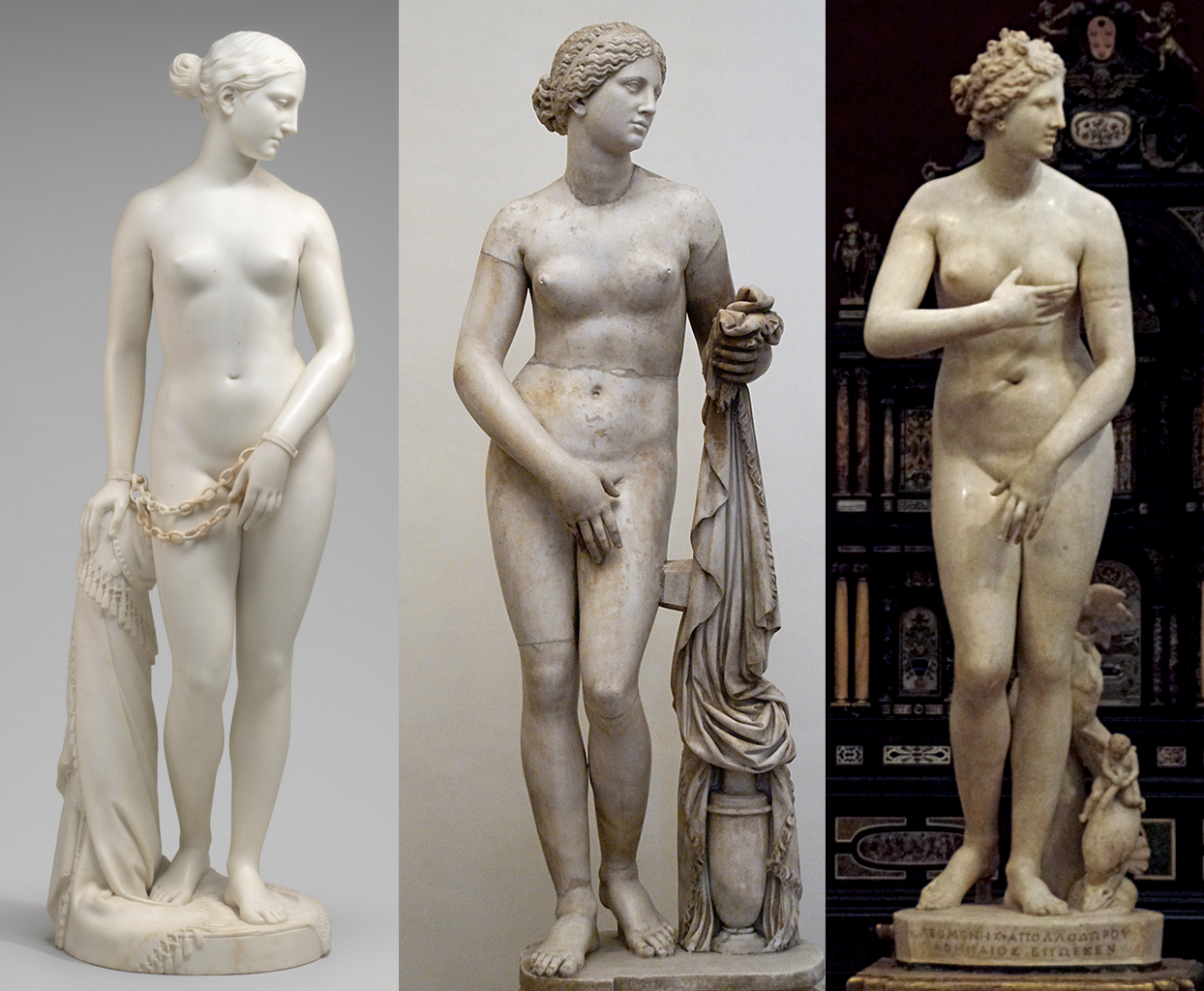The Greek Slave
The Greek Slave
https://smarthistory.org/hiram-power-greek-slave/
Dr. Bryan Zygmont, "Hiram Powers, The Greek Slave," in Smarthistory, March 10, 2020, accessed September 9, 2021, https://smarthistory.org/hiram-power-greek-slave/.
I chose The Greek Slave, it is a Greek sculpture carved from marble.

This Greek sculpture, as you can see, is a naked woman, whose hands are chained. She is attempting to cover herself in each of the sculptures. If you look closely, you can see along the cloth the woman is holding, there are many little crosses and lockets. It can be inferred that the crosses symbolize the woman's Christian faith. Lockets tend to symbolize love, which can be inferred as well. Using those two visual elements, Powers paints the scene of a Christian woman who has been taken from her family, her clothes have been stripped from her, and she is now presented as a slave by her captors. The sculptor, Hiram Powers, made six of these sculptures. The woman, as explained by Powers, is an enslaved Greek maiden who is being sold in the times of the Greek war's independence from Turkish rule. Powers explains why he carved this woman, he states "She is now among barbarian strangers…and she stands exposed to the gaze of the people she abhors, and awaits her fate with intense anxiety, tempered indeed by the support of her reliance upon the goodness of God." The purpose is to show the vulnerability of the enslaved women of ancient Greece. As you can see, a key visual element is the expression in the woman's face. She is peering to the side, avoiding eye contact, whilst having a distraught and anxious look amongst her face. This is a key element because it ties into the purpose of Power's creation that women, in most cases, in ancient Greek times were abused or objectified largely by their enemies. Another key visual element is the obvious nudity of the Greek woman. Nudity was never a huge concern in most art pieces from that era, however, in this case the Greek maiden did not choose to be nude. She had been stripped of her dignity due to slavery in the war. Powers states, "The Greek Slave is clothed all over with sentiment; sheltered, protected by it from every profane eye. Brocade, cloth of gold, could not be a more complete protection than the vesture of holiness in which she stands.” This means that even though the Greek maiden is vulnerable and nude amongst strangers, she is still protected and shielded due to her holiness. I believe this artwork is important because most times when people see ancient Greek statues and paintings, the women are nude, and it's almost become a normality. I think Powers intended that we should not just assume every nude female was subject to it consensually. He makes a strong point to show how vulnerable and anxious the nude female is whilst under the barbaric male gaze.
Annabelle, I loved reading about the artwork you chose! There is such an empowering message behind this sculpture. I liked how you talked about the sculptures of men and women around that time period were often nude and that was a common thing but suggested that there were times where girls did not give consent to being completely nude and were taken as slaves. It brings awareness to the subject and shines light on the brave Greek maidens who encountered this act. Wouldn't you think the people doing these awful things would feel bad? Or do you think a lot of this humiliation had to do with disagreement of religion because of the holy symbols she portrayed? I learned a lot from your reading, thanks for sharing!
ReplyDelete